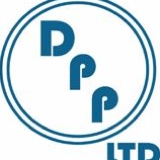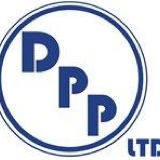Information
-
Document No.
-
Audit Title
-
Client / Site
-
Conducted on
-
Prepared by
-
Location
-
Personnel
Description of job site & auditing conditions
Job Site Access and Administrative Safety Activities
-
Job site entrance & exit (clearly marked and identifiable) - <br><br>References:<br><br>OSHA 1926.34 means of egress<br><br>
-
Are walkways and driveways identifiable and clear of debris/equipment/material? - <br><br>References:<br>SM 12.5
-
Are project lay down areas neat, organized, and well placed? - <br><br>References:<br><br>OSHA 1926.250 material handling, storage, use, and disposal
-
Emergency Preparedness.<br>procedures & emergency contacts posted.<br>1st aid kits.<br>Emergency exits routes. <br>OSHA poster.<br><br>References:<br><br>SM 6.6<br>OSHA 1926.35 emergency action plan<br>OSHA 1903.2 posting of notice
-
Are HazCom (MSDS), Safety Manual, Best Practices Manual present and available? - <br><br>References:<br><br>SM 8.2, 8.4, 8.8, 34.9<br>OSHA 1926.59 (1910.1200)
-
BBS. Done weekly be all craftsmen? Are they coached/reviewed same day? Quality?
-
Have Weekly Audits been performed?. Quality? Relevance? Communicated? - <br><br>References:<br>SM 3.5, 3.9, 3.10, 4.4, 4.5
-
Proper Reporting. (IWI, injuries, incidents, etc) - <br><br>References:<br>SM 6.2 injury reporting<br>SM 13.9 vehicle accident reporting<br>SM 32.2 IWI reporting<br>SM 33.2 mold reporting<br>OSHA 1904
-
Training. Are craftsmen properly trained? (MTST, excavation, confined space, etc.) -<br><br>SM 7.1 excavation training<br>SM 8.0 employee orientation/HazCom<br>SM 9.2 PPE training <br>SM 12.7 fire prevention training<br>SM 16.2 scaffold training<br>SM 20.5, 20.11 confined space training <br>SM 22.7 LOTO training<br>SM 23.0 supplied are training<br>SM 24.0 fire watch training <br>SM 25.6 respirator protection program training<br>SM 28.0 asbestos training <br>SM 29.0 lead paint awareness training<br>SM 31.3 forklift training <br>SM 35.4, 35.11 CrVI prevention program & awareness training <br>OSHA 1910.178(l) forklift training <br>OSHA 1926.21 safety training and education<br>OSHA 1926.62(l)(1)(iv) lead exposure<br>OSHA 1926.64(g)(1)(i)<br>OSHA 1926.417 LOTO<br>OSHA 1926.95 PPE<br>OSHA 1926.454 scaffolds<br>OSHA 1926.1101(k)(9) asbestos<br>OSHA 1926.503 fall protection<br>OSHA 1926.761 steel erection<br>OSHA 1926.1060 stairways and ladders<br>OSHA 1926.1430 cranes and derricks
-
OTHER
Personal Protective Equipment
-
Are craftsmen wearing appropriate PPE per task? - <br><br>References:<br>SM 9.2<br>OSHA 1926.95
Field Work
-
Pre Task Planning. Accurate & Effective? Craftsmen knowledge of what's on the card? -<br><br>References:<br>SM 3.4, 3.10, 4.4, 4.5, 30
-
Permits. (Hot work, excavation, confined space, etc.) - <br><br>References:<br>SM 12.10, 34.20, 34.26 (confined space)<br>SM 7.15, 34.18 (excavations)<br>SM 34.22 (critical lifting)<br>SM 34.23 (suspended platform)<br>SM 34.24 (safety lock removal)<br>OSHA 1926.21 safety training and education<br>OSHA 1910.146 permit required confined space
-
Daily equipment inspections. (Fork truck/cranes/scaffolds/vehicles/etc.) - <br><br>References:<br>SM: 16.6 scaffolds <br>SM 19.2 cranes<br>SM 31.4 forklifts<br>SM 7.10 excavations<br>SM 34.36 vehicles
-
LOTO. Energy properly controlled, locked and tagged? - <br><br>References:<br>SM 22<br>OSHA 1926.20(b)(1) &(b)(2)
-
Body positioning. Footing/hand placement/ over-reaching/line of fire etc.
-
Manual Material Handling. (Lifting/repetitive motion/etc.)
-
Mechanical Assisted Material Handling. (fork trucks/cranes/rigging/etc.) -<br><br>References:<br>SM 31 forklifts<br>SM 19 cranes & rigging<br><br><br>
-
Hand and Power Tools. (condition/red tag/proper use/guards) - <br><br>References:<br>SM 11<br>BPM 3, 4, 6, 8, 9, 23, 27, 34, 35, 36 (power tools)<br>OSHA 1926.300(b) <br><br><br>
-
GFCI in use? -<br><br>References:<br>SM 18.4<br>OSHA 1926.494.(b)(1)
-
OTHER
Working From Heights (scaffolds/ladders/lifts/etc.)
-
Competent person on site?
-
Ladders. Good condition & proper use (3 POC/4:1/etc.) - <br><br>References:<br>SM 10<br>BPM 1<br>OSHA 1926.1051
-
Scaffolds. (Tagged & inspected/access & egress/handrails/toe boards/etc.) - <br><br>References:<br>SM 16<br>BPM 2<br>OSHA 1926 Subpart L<br>
-
Lifts. Are lifts being used safely and properly? - <br><br>References:<br>SM 34.6, 34.11, 34.35<br>BPM 10, 11<br>OSHA 1926.452<br>OSHA 1926.453<br><br><br>
-
OTHER
Work Area Environmental Conditions
-
Housekeeping. (Cords, walking/working surfaces, materials, etc.) -<br><br>References:<br>SM 12.5, 12.9, 35.8<br>OSHA 1926.25<br><br><br>
-
Adequate Lighting? - <br><br>References:<br>SM 12.9, 18.5<br>OSHA 1926.56(a)
-
Noise Levels. -<br><br>References:<br>SM 9.12<br>OSHA 1926.52
-
Waste. Is waste stored/disposed properly? - <br><br>References:<br>OSHA 1926.252
-
Too hot/cold/wet/icy/etc. Are these being controlled well enough?
-
Other hazards (Chemical applications, special PPE)
Fire Prevention.
-
Fire extinguishers present and inspected? - <br><br>References:<br>SM 12.3.2<br>OSHA 1926.24
-
Are hot work areas free of combustibles & flammables?
-
OTHER
Excavations and Trenching.
-
Means of Egress. Required (when >4') so no more than 25' of lateral travel. - <br><br>References:<br>SM 7.4<br>BPM 24<br>OSHA 1926.34
-
Sloping/Shoring/Benching. - <br><br>References:<br>SM 7.14<br>BPM 24<br>OSHA 1926 Subpart P App B<br><br>
-
Is the spoil pile at least 2' from edge of excavation? -<br><br>References:<br>SM 7.9<br>BPM 24<br>OSHA 1926.651(i)(2)
-
OTHER
Confined Spaces.
-
Appropriate Permit & Log? - <br><br>References:<br>SM 20, 34.20, 20.13<br>OSHA 1926.21<br>OSHA 1910.146<br><br><br>
-
Are the means of gas detection appropriate? (calibration/use/etc.) -<br><br>References:<br>SM 20, 34.20, 20.13<br>OSHA 1926.21<br>OSHA 1910.146
-
Are the means of rescue appropriate? -<br><br>References:<br>SM 20, 34.20, 20.13<br>OSHA 1926.21<br>OSHA 1910.146
-
OTHER








